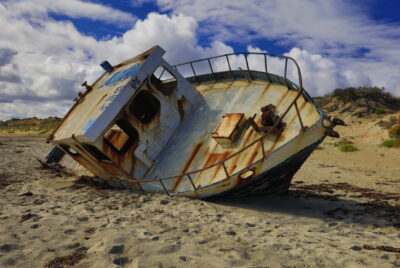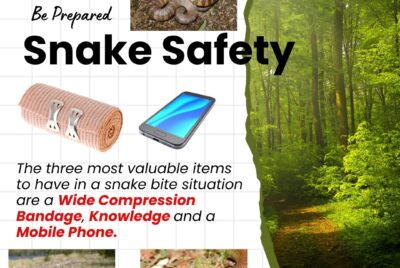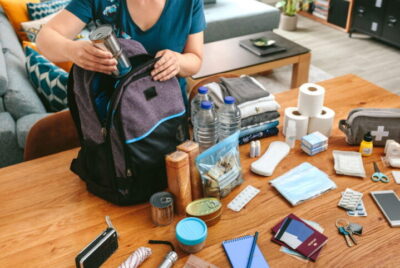The Value of a Good Knife in Survival Situations
The Value of a Good Knife:
In a survival situation, a good knife can be an indispensable tool, serving a multitude of purposes. Whether it’s for shelter construction, food preparation, self-defense, or crafting essential tools, a well-designed and reliable knife is an invaluable asset. Here I will explore the immense value of a good knife and its various uses in a survival scenario.
I. The Importance of a Good Knife in Survival.
A. Versatility:
- Shelter Construction: A good knife is essential for gathering materials, notching, and lashing, enabling the construction of shelters to provide protection from the elements.
- Fire Building: With a knife, you can effectively prepare tinder, create fire-starting notches, and even fashion a fire bow drill for friction-based fire-starting methods.
- Food Procurement: From hunting and fishing to preparing foraged edibles, a knife facilitates field dressing, cleaning, and butchering game, as well as filleting fish.
B. Food Preparation and Cooking:
- Cutting and Slicing: A knife allows for precise cutting, slicing, and chopping of various food items, making meal preparation easier and more efficient.
- Utensil Substitution: In the absence of conventional utensils, a knife can be used as a makeshift fork or spoon, enhancing eating capabilities in a survival setting.
- Food Processing: From peeling vegetables to crushing nuts, a knife can assist in a range of food processing tasks, expanding culinary options.
C. Tool Crafting and Repair:
- Carving and Whittling: A good knife enables the carving of tools, utensils, traps, and other implements necessary for survival and resource utilization.
- Cordage Creation: By stripping plant fibers and braiding them together, a knife can help create strong cordage for lashing, securing shelters, or constructing tools.
- Repair and Maintenance: A knife is essential for repairing gear, sharpening other tools, and maintaining equipment such as tents, clothing, and backpacks.
II. Features of a Good Survival Knife
A. Blade Design and Material:
- Fixed Blade: A fixed blade knife offers sturdiness and reliability, making it suitable for heavy-duty tasks and providing better control.
- Full Tang: A full tang knife, where the blade extends into the handle, enhances strength and durability.
- Blade Material: High-quality blade materials like stainless steel or carbon steel offer corrosion resistance, hardness, and ease of maintenance.
B. Blade Length and Shape:
- General-purpose Length: A blade length between 4 and 6 inches strikes a balance between versatility and portability, accommodating a wide range of tasks.
- Drop Point or Clip Point: These blade shapes provide a robust and versatile profile for tasks such as carving, slicing, and piercing.
C. Handle Design and Material:
- Ergonomics: The handle should be comfortable, offering a secure grip to prevent accidents and fatigue during extended use.
- Material Considerations: Handle materials such as wood, rubber, or synthetic compounds should be durable, non-slip, and resistant to environmental factors.
D. Tangibility and Balance:
- Weight and Balance: A good knife should have a balanced weight distribution, enabling precise control and reducing strain during prolonged use.
- Tangible Grip: The knife’s grip should provide a secure and comfortable hold, even in wet or slippery conditions, ensuring safe and efficient operation.
III. Safety and Maintenance
A. Safe Handling:
- Proper Grip: Maintaining a secure grip and ensuring the knife is used with caution prevents accidents and injuries.
- Knife Storage: Carrying and storing the knife safely in a sheath or protective cover reduces the risk of accidental cuts.
B. Blade Maintenance:
- Regular Cleaning: Keeping the blade clean and dry helps prevent rust and corrosion, ensuring optimal performance and longevity.
- Sharpening and Honing: Maintaining a sharp edge through regular sharpening and honing allows for precise cutting and safer operation. Be sure to consider how you will keep the knife sharp as this is also very important.
C. Safety Precautions:
- Sheath Usage: Keeping the knife securely stored in a sheath when not in use minimizes the risk of accidental cuts and ensures safe transportation. There are many kinds of sheaths ranging from hi tech to good old leather and regardless of what type the method of retaining the knife so you don’t lose it is very important. It must be secure and durable.
- Proper Tool Selection: Choosing the right knife for the intended task helps prevent mishaps and potential damage to the blade.
IV. Conclusion.
In a survival situation, a good knife is an indispensable tool that serves a multitude of purposes. From shelter construction to food preparation, tool crafting, and self-defense, its versatility makes it an essential asset. By choosing a knife with the appropriate features, prioritizing safety, and maintaining it properly, one can harness the full potential of this invaluable survival tool.



